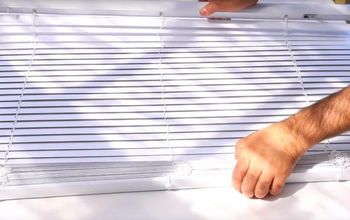White powder on chinese evergreen, what is it how do I get rid of it?
Related Discussions
GNATS - How to get rid of them?
Somehow my house and garden got tiny gnats that killed my fuchsia plant and fly everywhere. I have tried ALL the Web recommendations - soap and oil dishes, sand in th... See more
Marigolds growing! Should I pinch the buds?
My marigold plants are growing. I heard that pinching the buds until Autumn will allow them to grow without killing the plant. Is this true?
Growing garlic
Growing our first garlic, should we wait until the leaves are drying out before we pick it? Husband picked first one today along with our first potatoes.
How to keep mice out of your garden?
Hi everyone, I have mice in my garden destroying my vegetables and I have also noticed them in the barn and shed. Please can someone tell me how to prevent them from ... See more
What's the best flower/plant to grow in Texas?
I know that opinions vary, but what's your opinion?!I have great luck w Rosemary plants. Green all year long.
What can I do to get rid of big white grubs from potted plants
have a large number of pots containing pre bonsai trees of many varieties and noticed this morning when removing a tree from a pot that there were grubs possibly "cur... See more



Maybe it is a powdery mildew, what ever fungus it is, or even certain bugs, Neem Oil will probably eradicate it.
The following information was taken from the Morton Arboretum: http://www.mortonarb.org/trees-plants/tree-and-plant-advice/help-diseases/powdery-mildews
Powdery mildews
Powdery mildews are caused by over 1,000 species of fungi that affect most landscape plants. Most grow only on the upper leaf surface and stems of plants, and do not invade the leaf tissue of the host plant. In most cases, powdery mildew is not a serious problem and prompt recognition and control can prevent severe damage to plants.
SYMPTOMS
Powdery mildews are often observed in late summer and early fall as a white or gray powdery growth on the top surface of leaves, stems, flowers, and fruit. As the infection advances, buds fail to open, leaves can become distorted, turn yellow, brown, or show chlorosis, or they may drop prematurely. Fruits develop blemishes or abort early.
Powdery mildew grows primarily on leaf surfaces and does not require water to infect the plant. Powdery mildew fungi overwinter in tiny black bodies, known as fungal threads, which are located in leaf litter, stems, and dormant buds. In spring, the fungal threads produce spores that start the initial infection, especially during periods of high humidity when days are warm and nights are cool (ideal temperatures range between 60 to 80 degrees F). Susceptible plants are most vulnerable while new shoots and leaves are expanding. The specific fungi causing damage varies with each individual host; for example, the fungus that causes powdery mildew on lilacs does not infect viburnums.
MANAGEMENT
Cultural
Many powdery mildews, especially those that attack trees and shrubs, are more unsightly than harmful. Good sanitation is very important to reduce infections next spring and summer. Powdery mildews do not grow on dead tissue, but they have structures that carry them through the winter on dead and living plant tissue.
Chemical
Since most powdery mildew symptoms occur late in the growing season, it is usually not considered serious enough to justify chemical control. However, some plants may warrant protection and successful chemical control requires applying a fungicide properly and at the right time.
Mildews develop rapidly so spray when symptoms first appear. Check labels to be sure the plants you want to treat are included. Sulfur-containing products can burn some foliage.
re-pot in the next size up in fresh soil and spray with a fungicide,neem oil will not kill fungus.